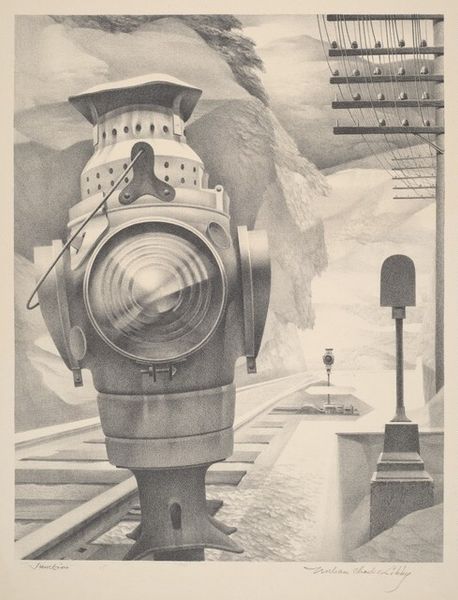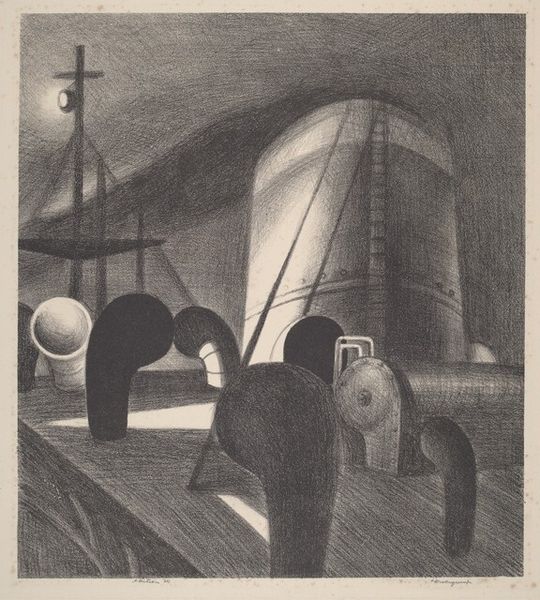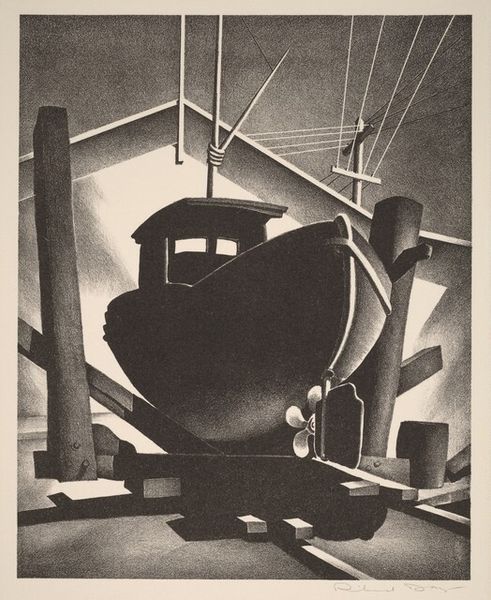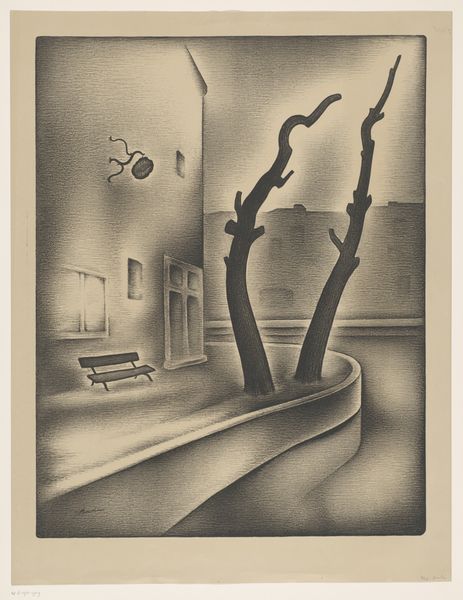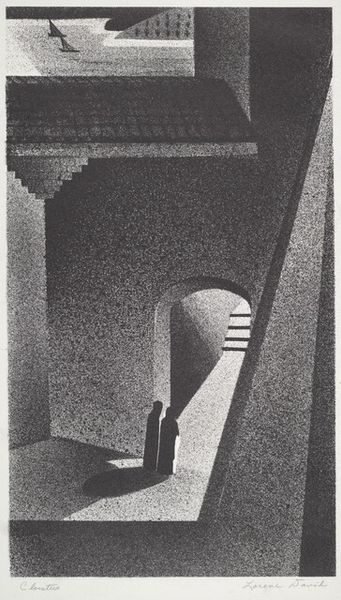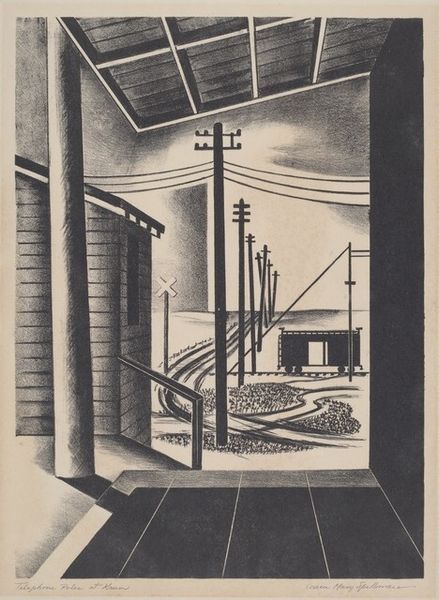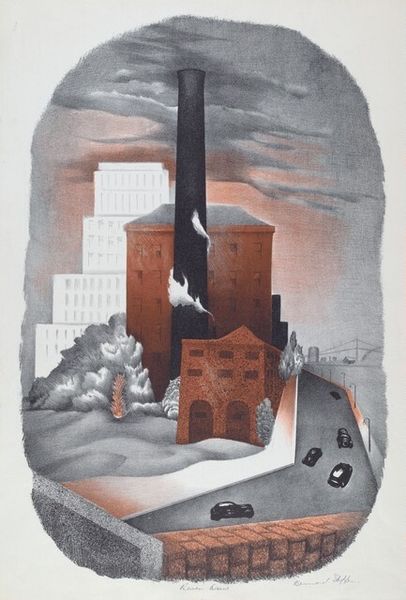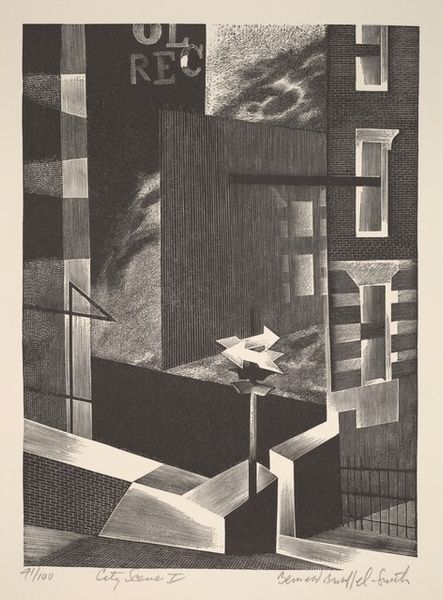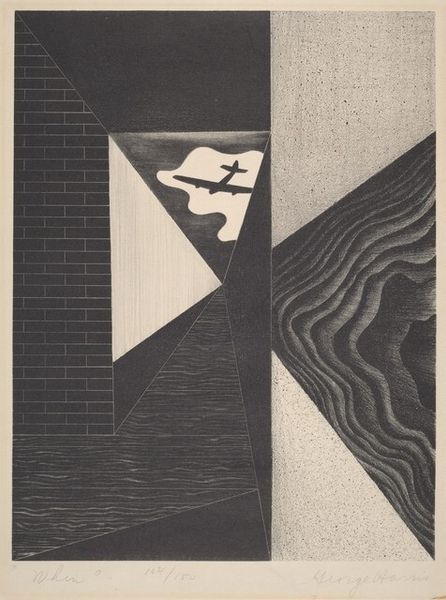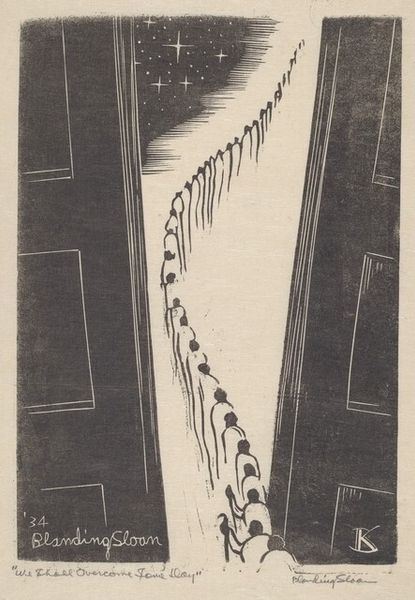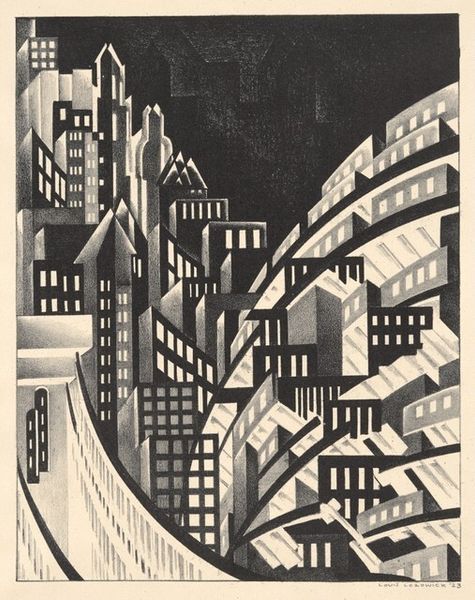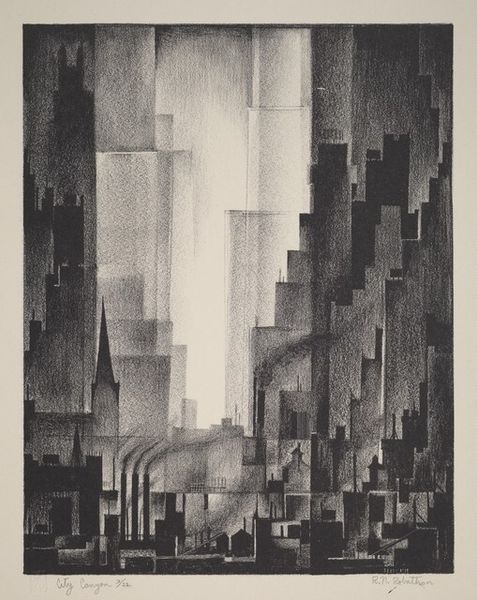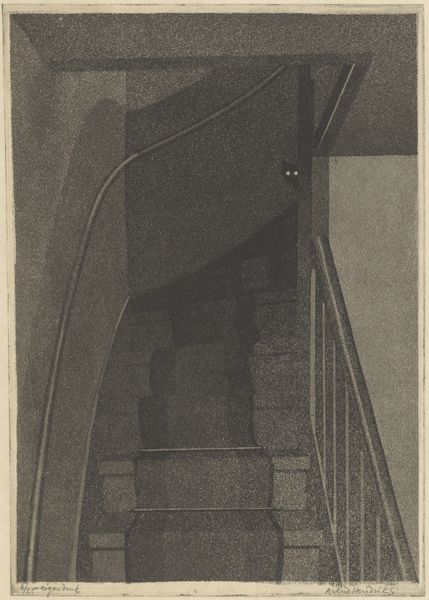
lithograph, print
#
lithograph
# print
#
landscape
#
geometric
#
realism
Dimensions: image: 375 x 252 mm sheet: 483 x 337 mm
Copyright: National Gallery of Art: CC0 1.0
Curator: Oh, I’m immediately drawn to the atmosphere. It’s quiet, still almost. Like a moment suspended in time. All that geometric stillness with an amazing play of dark and light... Editor: What you’re responding to is the meticulous hand of William Charles Libby in this lithograph entitled "Semaphore," likely created around 1950. What’s remarkable to me is the artist’s selection of an industrial motif and depiction of urban life as devoid of people. Curator: Yes, that sense of something human missing. There’s a slight melancholy in the solitude, like a forgotten corner waiting for a train that might never arrive. The looming landscape backdrop in shades of grey reminds me of mountains, a wildness in contrast to the rigid rails, yet both seem to exist only as silent observers. Editor: Indeed. We see that sense of tension also in Libby’s composition. The signal device in the foreground dominates the frame but ultimately points to those tracks that fade into the background, where the artist sets up a seemingly abstract composition using only land, sky, and billowing clouds. There is some geometric construction, yet also some softness and decay in the artist's interpretation of an industrialized setting. I see an invitation to consider the impact of industry on landscape and perception. Curator: I think it's interesting, the signal light is so boldly rendered, it’s heavy and serious with an intense light behind the lens—but those stacked geometric forms feel almost playful. And those open circles make me think of vacant eyes. Editor: The entire picture calls into question progress through mechanical intervention by depicting its material result: that of industry dominating our landscape. The lonely rail lines speak volumes about societal connectivity, who has access and the purpose of that access in the mid-20th century. Curator: Yes! It's an image that sticks with you long after you turn away, like a question posed without words. Editor: A stark image of urban realism in times of change. This piece truly echoes our contemporary dialogues. It asks who benefits and loses as we look towards modernization and innovation.
Comments
No comments
Be the first to comment and join the conversation on the ultimate creative platform.
